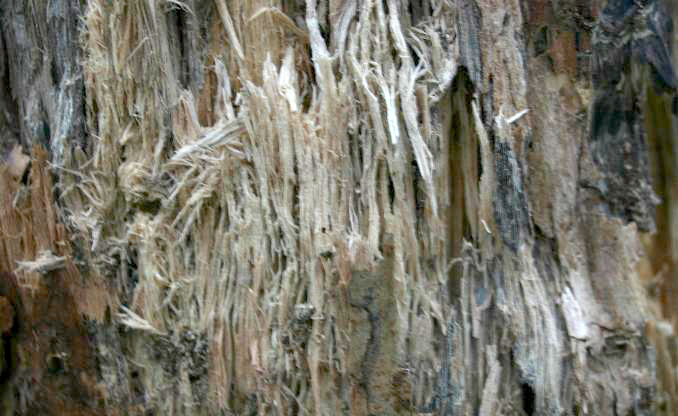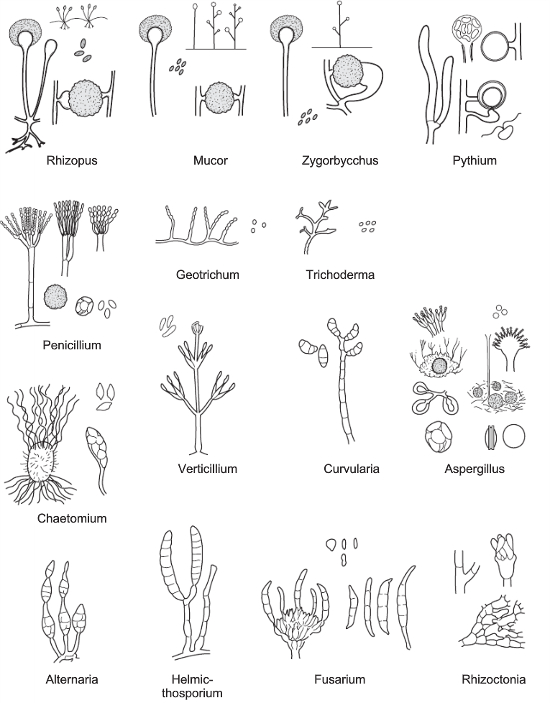Filamentous Fungi
Visión general
Source: Laboratories of Dr. Ian Pepper and Dr. Charles Gerba - The University of Arizona
Demonstrating Author: Bradley Schmitz
Fungi are heterotrophic eukaryotic organisms, and with the exception of yeasts, are aerobic. They are abundant in surface soils and are important for their role in nutrient cycling and the decomposition of organic matter and organic contaminants. White rot fungi (phanerochaete chryosporium) for example, (Figure 1) are known to degrade aromatics.

Figure 1. White rot on birch.
Procedimiento
1. Soil Sample Preparation
- First, determine the initial moisture content of the soil by overnight drying of a known amount of the moist soil, and reweighing the dried soil. The equation to determine the initial moisture content of the soil is:

(Equation 1)
where:
MC = moisture content
W = net weight
D = dry weight - Calculate the amount of water that must be added to 25 g of soil to increase t
Resultados
Colony Counts
The number of fungal colonies per gram of soil is equal to the number of colonies counted on the plate multiplied by the reciprocal of the dilution plated. For example, if 46 colonies are counted at a dilution of 10-5, then the CFU per gram of soil is 46 x 105 or 4.6 x 106.
Identification of Three Different Fungal Genera
Fungi can be id
Aplicación y resumen
Dilution and plating of soil fungi can be used as an indication of the health of a soil. Normally a “healthy” fertile soil will have 105 to 106 fungi per gram of soil. It can also be utilized to isolate pure cultures of specific fungi, subsequently evaluated for specific properties, such as the ability to degrade organic compounds. These can be detrimental as in the case of white rot fungi, or beneficial when toxic organics are degraded through biodegradation. Other uses of pure cultures
Referencias
- Pepper, I.L., Gerba, C.P., Brusseau, M. Environmental & Pollution Science, 2nd Ed. Academic Press, San Diego, CA. (2006).
- Pepper, I.L., Gerba, C.P. Environmental Microbiology, A Laboratory Manual, 2nd Ed. Academic Press, Boston, MA. (2005).
Tags
Saltar a...
Vídeos de esta colección:

Now Playing
Filamentous Fungi
Environmental Microbiology
57.2K Vistas

Filamentous Fungi
Environmental Microbiology
57.2K Vistas

Microbial and Fungal Diversity
Environmental Microbiology
17.2K Vistas

The Roles of Bacteria and Fungi in Plant Nutrition
Environmental Microbiology
34.7K Vistas

An Introduction to Saccharomyces cerevisiae
Environmental Microbiology
231.6K Vistas

Yeast Reproduction
Environmental Microbiology
180.1K Vistas
ACERCA DE JoVE
Copyright © 2025 MyJoVE Corporation. Todos los derechos reservados
